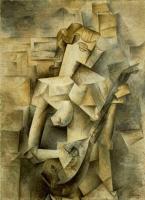15 typical dances of Chile, classified by region
Dancing is a way of expressing ourselves on a bodily level; each country, city and even town, has a series of typical dances, which are part of its history and culture.
In this article we will focus on Chile to talk about its dances, as it is a country full of life, history and richness in this sense. Specifically, we will know 15 typical dances of Chile, classified by their area: north, center or south.
- Related article: "Dancing also provides multiple benefits on a psychological level."
15 typical dances of Chile
In Chile, festive dances of different types are very typical; these dances They are folkloric expressions that usually have a religious and/or festive motivation.. Most of these dances have many years of history.
The typical dances of Chile can be divided according to three zones of the country: the North zone, the Central zone and the South zone. In this article we will follow this classification.
The National Dance of Chile
Through the typical dances of Chile, the country expresses its national identity, its culture, its values and its ways of celebrating. First of all, we will see what the Chilean dance par excellence consists of, that is, its national dance: the famous cueca.
1. the cueca
The cueca is the national dance of Chile, and for this reason, it is a very popular dance. It is danced in all regions of the country; specifically, from the year 1824. On September 18, 1979, the cueca was declared the national dance of Chile.
How do you dance the cueca? Firstly, the huasos (this is what Chilean men from the central or southern zone are called), look for a girl they like, and offer her her arm. The girl gets up and goes with the joker; they walk until they reach an area of the room or track. They stand one in front of the other, with a handkerchief in hand, and begin to dance the cueca.
The huaso turns insinuatingly and "chases" her partner (she "flees"); then he uses the handkerchief as a bow, surrounding the girl with it but without actually touching her, and "brings" her to her side.
- You may be interested in: "The 4 main branches of Anthropology: what they are like and what they investigate"
Dances from the Northern zone of Chile
We are going to see some of the typical Chilean dances from the northern part of the country:
2. little carnival
The carnavalito is another of the typical dances of Chile; this time from the north zone. In fact, Its origin is Bolivian, but it is also danced in Chile (in the North zone) and in Argentina, especially during the Carnival festivities.
The musical genre that accompanies the carnival is the "huaino", made with instruments such as the bass drum and the quena. The carnival is danced in a group (in pairs). His choreography is joyful and striking.
3. The bull
The third of the typical dances of Chile that we will know is the torito, also danced in the north of the country. this dance It is typical of the religious festival of San Pedro, which is celebrated every June 29.
It is a dance that is also performed in a group, where two men dressed in black and white (each one in a different color) dance in the center of the room or place. In addition, they wear a rather large bull mask.
4. the huachitorito
The next dance, also from the North of Chile, is the huachitorito. It is especially typical of the Christmas season. It is accompanied by instruments such as: the guitar, the bass drum, the snare drum, the violins, the quena and the accordions. To do it, different pairs are formed in rows two by two (or in a circle).
The couples surround a couple in the center. The dance is staged while the Christmas shepherds visit Christmas nativity scenes in the houses of the city or town.
5. The northern cueca
It is a version of the Chilean cueca; in this case, it has no lyrics, just a melody. The dance of the northern cueca is accompanied by instruments such as the trumpet, the tuba, the box and the bass drum. Its melody is very happy, of celebration, and it is another of the typical Chilean dances that are danced by couples.
6. the bong
The cachimbo is another very festive dance. It is also danced in pairs and with scarves in their hands. It resembles the cueca, since includes turns that go according to the rhythm of the music. In the hookah there is also a "love conquest", where the man is the one who performs such an action. Its melody is composed of guitar and accordion.
Dances of the South zone
We are now going to tour the southern part of the country. What Chilean dances can we find in this area?
7. the rack of ribs
Another of the typical dances of Chile is the costillar. In this case, it is a typical dance of the South. Generally it is a dance that only men perform, although it is true that sometimes the couple is included. The rib is a dance that represents a commune in the central zone of Chile, called Chillán. To perform this dance, a bottle is placed in the center of the floor.
8. the pericona
The pericona is another typical Chilean dance; It is very popular on the island of Chiloé. Four people participate in the pericona, who they dance making six turns from right to left.
9. The chocolate
Chocolate consists of a couple dance. It has Spanish influences, especially in relation to the twists that its participants take.and the position they take. Chocolate has different versions, like many other typical Chilean dances.
10. refalosa zamba
Another of the typical dances of Chile is the zamba refalosa, a very festive dance. It is performed in pairs, with a handkerchief in hand. couples stay apart. The movements include mostly spiral turns.
11. the chair
Another typical dance from the Chilean south is the sirilla, although its origin is Spanish. It is danced mainly on the island of Chiloé.
Its execution is in pairs; the couples face each other (form a square). The dance includes different movements with twists and changes of position. It is also a dance that includes handkerchiefs.
Dances of the downtown area
We change the zone, and we are going to see now the typical dances of Chile in its Central zone:
12. the dungeon
The dungeon includes a choreography depicting two hawks circling a dove. The dancers of the mazamorra perform somewhat graceful movements, in order to "conquer" the love of a woman. Precisely, the name of this Chilean dance originated from this "mazarmorreo" that takes place during the dance itself.
13. the little one
The pequén is another typical Chilean dance; its name originates from a field bird with this name.
This dance can be danced in different ways. In the downtown area, “el pequen campesino” is danced. In this case, the dancers they dance imitating the flight of the little one. The dance begins, like many others, with the choice of a dance partner (the man initiates it). Then there is a certain conquest and flirting between the two.
14. the gate
The porteza is also another of the best-known typical dances of Chile. The melody of the porteza also belongs to that of the cueca. For a start, the man dances giving a few small jumps; then alternate their legs making crosses, to the sound of the woman's dance, which she performs a so-called "brush" through her feet.
15. the sajurian
The sajuriana, also known as sajuria and secudiana, It is typical of a Chilean region called Ñuble. The melody that accompanies the sajuriana is a melody similar to the copla. In this case, the dancers dance separately, and wave a handkerchief up and down. The movements are quite improvised, and include “zapatoneados”.
Bibliographic references:
- Collier, S. and William F.S. (2004). A History of Chile: 1808-2002. Cambridge University Press.
- Loyola, M. and Cadiz, O. (2014). 50 Traditional and Popular Dances in Chile. University Editions of Valparaíso


